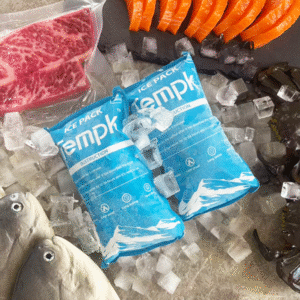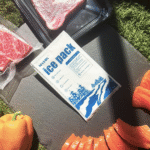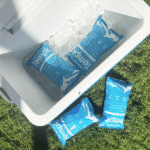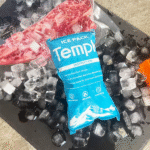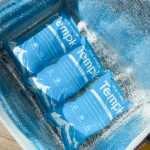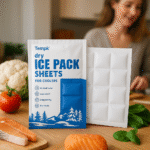Packing dry ice for shipping isn’t just about tossing blocks into a box—it’s about compliance, Sicherheit, und Ihre Produkte intakt zu halten. In 2025, folgende Hier ist pi 954 Und 49 CFR 173.217 ist für internationale und inländische Sendungen unerlässlich. Sie benötigen die richtige Menge Trockeneis, richtige Isolierung, klare Kennzeichnung mit „UN 1845“ und ein Verpackungsdesign, das die Entlüftung von CO₂ ermöglicht. Richtig gemacht, Sie vermeiden kostspielige Verzögerungen, Schützen Sie Ihre Ladung, und beim ersten Mal die Carrier-Checks bestehen.
-
Calculate how much dry ice you actually need for your lane and payload
-
Choose the right insulated container to extend hold time and reduce waste
-
Label and document packages correctly to comply with Class 9 Regeln
-
Apply real-world cold chain best practices for food, Pharma, und Biotech
-
Verstehen 2025 Innovationen: CO2-negative Pellets, IoT-Überwachung, und nachhaltige Isolierung
How much dry ice should you use for shipping?
Direkte Antwort: Planen 2.5–5 Pfund (≈1,1–2,3 kg) pro 24 Stunden pro kleinem Kühler, Dann auf die Isolierung einstellen, Klima, and transit delays. Mark only the Netto -Trockeneis in kg auf der Box.
Erweiterte Erklärung:
The sublimation rate depends on insulation type, Kastengröße, und Umgebungsbedingungen. A 48-hour ground shipment in summer might require 10–14 lb (4.5–6,4 kg), while the same shipment with a vacuum-insulated shipper may need just 8–10 lb. Always round up and add a 25–40% buffer for customs or weather delays.
Easy sizing shortcut
| Route & Dauer | Base Estimate | Puffer | What It Means for You |
|---|---|---|---|
| Hausluft, 48 Std | 6–8 lb | +2 lb for thin liner | Safe for 2-day lanes |
| Warm 3-day ground | 10–14 lb | Upgrade -Isolierung | Reduce spoilage risk |
| Intl express, 2–3 Tage | 8–12 lb | Buffer 25–40% | Covers customs dwell |
Profi-Tipp:
-
Place dry ice on top of the payload—cold air sinks and stabilizes temperatures.
-
Aufzeichnen Netto -Trockeneisgewicht during pack-out—this is a compliance requirement.
-
Use a pack-out calculator or historical lane data to refine estimates.
What packaging works best for dry ice shipments?
Direkte Antwort: Verwenden Sie a vented corrugated outer box with strong insulation (EPS oder VIP), secure the product in a sealed inner container, and leave a vent path for gas.
Einzelheiten:
-
EPS -Schaum (1–1,5 in): Erschwinglich, holds for 24–48 hours, ideal for domestic shipping.
-
Vakuumisolationsgremien (VIP): High performance, holds for 48–96 hours, reduces dry ice by ~30%.
-
Rigid polystyrene coolers: Wiederverwendbar, dauerhaft, moderate efficiency.
| Containertyp | Zeit halten | Effizienz | Anwendung |
|---|---|---|---|
| EPS-Liner (1–1,5 in) | 24–48 Std | Mäßig | Low-cost, Kurzstrecken |
| VIP -Panels | 48–96 hrs | Hoch | Lang, high-value shipments |
| Starrkühler | 24–72 hrs | Moderate-high | Dauerhaft, wiederverwendbare Option |
Praktische Ratschläge:
-
For weekend risk, hinzufügen 25–40% dry ice reserve or switch to VIP.
-
For parcels >30 kg capacity, sicherstellen label text height ≥12 mm.
-
Never seal completely; venting is mandatory to prevent ruptures.
What labels and documents are required in 2025?
Direkte Antwort: Mark one face of the package with:
-
“Und 1845, Trockeneis, net __ kg”
-
Klasse 9 Gefahrendiamant
-
Versender- und Empfängeradressen (not on the hazard label)
Erweitert:
-
FedEx/UPS: No hazmat declaration if dry ice is used to cool non-dangerous goods. Trotzdem, you must input net kg in shipping tools.
-
USPS: Nur inländisch, Max 5 LB für Luft; no international dry ice shipments allowed.
-
Iata 2025 Checkliste: Self-audit tool for shippers to avoid acceptance delays.
Safety rules you cannot ignore
-
Verwenden Sie niemals luftdichte Behälter: CO₂ muss entweichen.
-
Tragen Sie isolierte Handschuhe: Frostbite can occur in seconds.
-
Ventilate vehicles & Lagerung: CO₂ kann Sauerstoff verdrängen.
-
Don’t write inside the Class 9 Diamant: Labels must be clean and clear.
Einblick in den Fall: A seafood exporter reduced failed scans by 60% after switching to preprinted UN 1845 panels with a dedicated address area.
Was sind die 2025 innovations in dry ice shipping?
-
Carbon-negative dry ice pellets: Made from captured CO₂, Reduzierung der Emissionen.
-
Kompostierbare Isolierung (biofoam): Meets ISTA 7E freeze standards, composts in ~100 days.
-
IoT-Überwachung: Real-time temperature alerts and data logging for compliance.
-
KI-Routing & Automatisierung: Cuts dwell times and optimizes dry ice allocation.
Market insight: Von 2025, reusable shippers and VIP packaging are cutting spoilage claims by over 20%, making eco-friendly choices financially attractive.
FAQ
Q1: How to pack dry ice for shipping without a hazmat declaration?
Use a ventilated box, Isolierung hinzufügen, weigh and label “UN 1845, Trockeneis, net _kg,” and apply a Class 9 Etikett.
Q2: How much dry ice per day should I plan for?
2.5–5 lb per 24 hr for small shippers; always add a 25% Puffer.
Q3: Can I ship dry ice internationally with USPS?
NEIN. USPS permits domestic dry ice shipments only, ≤ 5 lb durch Luft.
Q4: Where should I place the hazard label and text?
On the same face of the package, outside of the hazard diamond.
Q5: Can I mix gel packs with dry ice?
Ja. Gel packs act as a buffer once dry ice is spent, extending hold time.
Zusammenfassung & Empfehlungen
To pack dry ice in 2025:
-
Wählen Sie a vented outer box with EPS or VIP insulation
-
Trockeneis hinzufügen über der Nutzlast and record the net kg
-
Mark clearly with Und 1845 + Klasse 9 Hazard -Etikett
-
Folgen carrier-specific guides to avoid labeling errors
-
In Betracht ziehen VIP, wiederverwendbare Versandtaschen, and IoT monitoring Kosten und Risiko senken
Nächste Schritte:
-
Use Tempk’s dry ice calculator for frozen shipping
-
Explore gel packs vs dry ice for pharma
-
Download the IATA packing instruction 954 Checkliste
Über Tempk
Und Tempk, wir entwerfen Kaltkettenlösungen that reduce dry ice consumption while maintaining compliance. Our systems combine validated pack-outs, Umweltfreundliche Isolierung, Und automated labeling tools to help you cut exceptions and reduce spoilage.
CTA: Bereit, Ihre Sendungen zu optimieren? Schedule a cold chain consultation and get a tailored pack-out review for your top shipping lanes.






